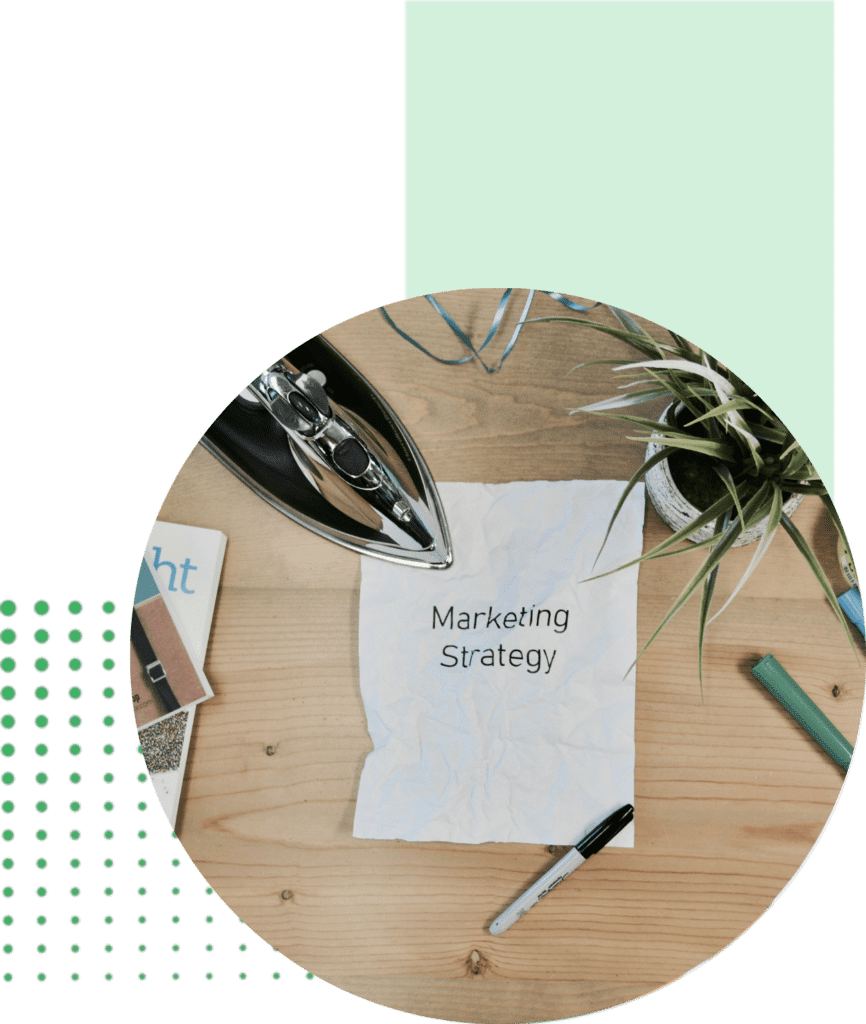Intégrer l'IA générative dans son quotidien
MArketing et communication
Cette formation vous permettra de comprendre comment utiliser l‘IA générative dans votre quotidien d’équipe marketing et communication.

DÉCOUVREZ NOTRE FORMATION
Objectifs
- Comprendre le fonctionnement de l'IA et de ChatGPT
- Comprendre comment utiliser l'IA dans l'activité professionnelle
- Savoir réaliser un prompt optimisé répondant à mes objectifs
- Être capable d'identifier les activités dans lesquelles ChatGPT peut m'aider
Intra
Nos sessions en INTRA vous permettent de personnaliser la formation à votre contexte et vos enjeux, avec des options d’ancrage spécifiques.
Contactez nous pour une proposition adaptée à vos besoins.

Contenu
- 5 sessions visio de 2 heures ou 2 jours en présentiel
- 3 heures via des capsules e-learning avant chaque session
Délai d’accès à la formation : La formation peut démarrer 8 jours après la signature de la convention ou réception de l’accord de prise en charge OPCO.
NOUVEAUTÉ 2024










Programme
Déroulé de la formation
Introduction à l'IA et préparation de ChatGPT
- Qu’est-ce que l’IA ?
- Utiliser et comprendre comment utiliser ChatGPT
L'IA pour mon plan marketing et ma ligne éditoriale
- L’IA pour créer mon plan marketing
- L’IA pour préparer ma ligne éditoriale
L'IA pour mon contenu multicanal
- L’IA pour rédiger mes contenus
- Savoir rédiger des prompts
L'IA pour mon acquisition outbound
- L’IA pour rédiger mes contenus d’acquisition outbound
- L’IA pour générer des idées d’acquisition outbound
Aller plus loin : Utiliser GPT Builder et d'autres outils IA
- Utiliser GPT Builder
- Découvrier les autres outils d’IA
Après la formation
- Questionnaire de validation des acquis

Avant chaque session
Les participants réalisent le e-learning correspondant.

Pendant la session
Le formateur anime avec quizz, exercices individuels ou collaboratifs, challenges, mises en situations.

Après chaque session
Les participants ont des exercices de mise en application dans leur contexte.
MODALITÉS DE LA FORMATION
Public
Responsable marketing, responsable communication, responsable acquisition, content manager.
Toutes nos formations sont accessibles aux personnes en situation de handicap. Contactez-nous pour un accompagnement spécifique et adapté à vos besoins.
Prérequis
Un questionnaire de positionnement est envoyé avant le début de la formation pour évaluer le niveau avant l’entrée en formation.
Evaluation
À l’issue de la formation, un questionnaire de validation des acquis sera remis aux participants afin d’établir le niveau d’atteinte des objectifs de la formation.
Le résultat de ce questionnaire sera restitué au client en fin de formation, au cours d’un rendez-vous de suivi post formation (débriefing).
DE NOMBREUSES FORMATIONS DISPONIBLES
Découvrez également
Formation pour améliorer la segmentation client, le parcours client et le développement de la culture client au sein de votre entreprise.
Formation pour développer son empathie, son agilité, son adaptabilité pour améliorer la relation client.
Intégrer l’IA générative en marketing et communication : une formation incontournable
Dans un environnement où le digital domine, intégrer l‘IA générative en marketing et communication devient essentiel pour toute entreprise souhaitant rester compétitive. Cette technologie révolutionnaire permet non seulement de créer du contenu de manière plus efficace, mais aussi d’optimiser les campagnes marketing en les rendant plus personnalisées et performantes. Découvrez à travers cette formation comment tirer parti de l’intelligence artificielle pour améliorer vos stratégies marketing et de communication.
Qu’est-ce que l’IA générative en marketing et communication ?
L’IA générative en marketing et communication fait référence à l’utilisation d’algorithmes d’intelligence artificielle pour créer du contenu original, automatiser des processus et optimiser la manière dont les marques interagissent avec leurs audiences. Cette technologie peut générer des textes, des images, des vidéos, et bien plus encore, permettant ainsi aux professionnels du marketing de gagner du temps et d’améliorer la qualité de leurs campagnes.
Comment l’IA générative peut-elle personnaliser le marketing digital ?
La personnalisation des campagnes est devenue un enjeu crucial dans le marketing moderne. Grâce à l’IA générative en marketing et communication, il est désormais possible de créer des messages ultra-ciblés pour chaque segment d’audience. En analysant des données en temps réel, l’IA peut ajuster le contenu pour répondre aux préférences individuelles des clients. Cette personnalisation accrue permet non seulement d’augmenter le taux d’engagement, mais aussi de maximiser les conversions.
Automatiser ses campagnes marketing avec l’IA générative
Une des principales applications de l’IA générative en marketing et communication est l’automatisation marketing. L’IA peut aider à créer des campagnes publicitaires de manière automatique, en ajustant les contenus en fonction des retours des utilisateurs. Par exemple, des publicités peuvent être générées automatiquement pour correspondre aux goûts de chaque utilisateur, augmentant ainsi leur pertinence et leur efficacité. L’automatisation de ces processus permet aux équipes marketing de se concentrer sur des tâches plus stratégiques, tout en assurant une optimisation continue des campagnes.
Optimiser les réseaux sociaux grâce à l’IA générative
Les réseaux sociaux sont une plateforme clé pour les entreprises, et l’IA générative en marketing et communication peut considérablement améliorer la manière dont ces plateformes sont utilisées. Grâce à des outils d’IA, vous pouvez optimiser les réseaux sociaux en créant du contenu visuel et textuel automatiquement, adapté à chaque réseau et chaque audience. De plus, l’analyse prédictive permet de publier du contenu au moment le plus opportun, maximisant ainsi la portée et l’engagement.
Les avantages de l’IA générative dans la création de contenu marketing
L’un des plus grands avantages de l’IA générative en marketing et communication réside dans sa capacité à produire du contenu de manière rapide et efficace. Qu’il s’agisse d’articles de blog, de newsletters, de posts sur les réseaux sociaux ou de vidéos, l’IA générative permet de créer du contenu original en un temps record. Cela ne signifie pas seulement une réduction des coûts et du temps passé, mais aussi une amélioration de la qualité, car l’IA peut analyser les tendances et ajuster le contenu pour qu’il soit toujours pertinent pour l’audience ciblée.
L’intégration des chatbots et assistance virtuelle dans la stratégie de communication
Les chatbots et l’assistance virtuelle sont des applications directes de l’IA générative en marketing et communication. Ces outils permettent aux entreprises d’améliorer leur service client en offrant des réponses automatiques mais personnalisées aux requêtes des utilisateurs. Les chatbots peuvent gérer un grand nombre d’interactions en temps réel, offrant ainsi une meilleure expérience utilisateur et augmentant l’engagement client. De plus, ils sont capables de collecter des données précieuses qui peuvent être utilisées pour affiner les stratégies de communication.
Comment l’IA générative booste la productivité des équipes marketing
Grâce à l’IA générative en marketing et communication, les équipes marketing peuvent considérablement accroître leur productivité. Les tâches fastidieuses et chronophages, comme la création de contenu ou l’analyse de données, peuvent être automatisées, libérant ainsi du temps pour des activités à plus forte valeur ajoutée. L’automatisation marketing permet de gérer simultanément plusieurs campagnes et de garantir qu’elles sont constamment optimisées en fonction des retours des utilisateurs.
Techniques pour automatiser la création de contenu visuel avec l’IA
L’IA générative en marketing et communication ne se limite pas à la création de textes. Elle peut également être utilisée pour automatiser la création de contenu visuel, un domaine essentiel pour toute stratégie marketing réussie. Que ce soit pour générer des images, des vidéos ou des infographies, l’IA peut créer des visuels adaptés aux attentes des audiences. Cela est particulièrement utile pour les réseaux sociaux où le contenu visuel est souvent la clé de l’engagement.
Outils d’IA générative pour améliorer la stratégie de communication
De nombreux outils d’IA générative sont aujourd’hui disponibles pour aider les entreprises à améliorer leur stratégie de communication. Ces outils permettent de produire du contenu pertinent, d’automatiser des réponses client via des chatbots, ou encore de personnaliser des campagnes marketing en fonction des préférences des consommateurs. L’intégration de ces outils permet une approche plus stratégique et réactive face aux besoins changeants du marché.
Exemples de contenu généré par IA pour la communication d’entreprise
L’IA générative en marketing et communication peut créer une grande variété de contenu pour les entreprises, allant des articles de blog aux rapports personnalisés. Par exemple, un outil d’IA peut générer automatiquement des newsletters adaptées aux intérêts spécifiques de chaque abonné, ou encore créer des posts sur les réseaux sociaux qui engagent davantage l’audience cible. Ces contenus, générés rapidement et efficacement, permettent aux entreprises d’être plus réactives et d’améliorer leur communication.
Conclusion : Pourquoi se former à l’IA générative en marketing et communication ?
L’IA générative en marketing et communication est une technologie indispensable pour toute entreprise souhaitant optimiser ses processus, améliorer son engagement client et créer du contenu pertinent de manière efficace. En participant à notre formation, vous apprendrez comment intégrer cette technologie dans vos stratégies de marketing digital et de communication, tout en découvrant des techniques pour automatiser vos campagnes, personnaliser vos messages et améliorer votre productivité. Cette formation vous donnera toutes les clés pour exploiter au maximum le potentiel de l’IA dans votre quotidien marketing.
Grâce à l’IA, le marketing digital devient plus intelligent, plus réactif, et plus performant. Profitez des opportunités qu’offre cette technologie pour rester à la pointe des tendances et offrir à vos clients des expériences toujours plus engageantes et personnalisées.












